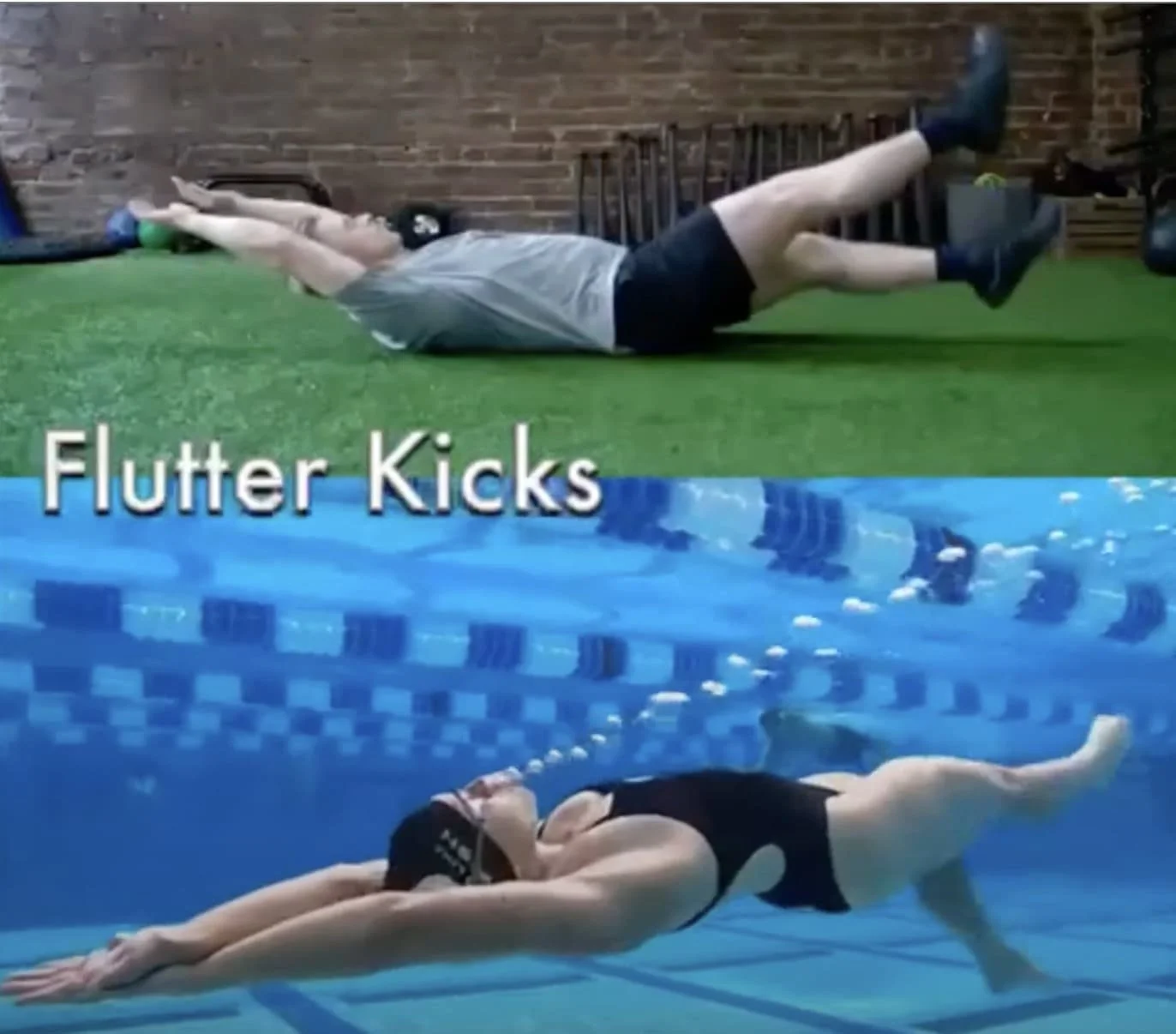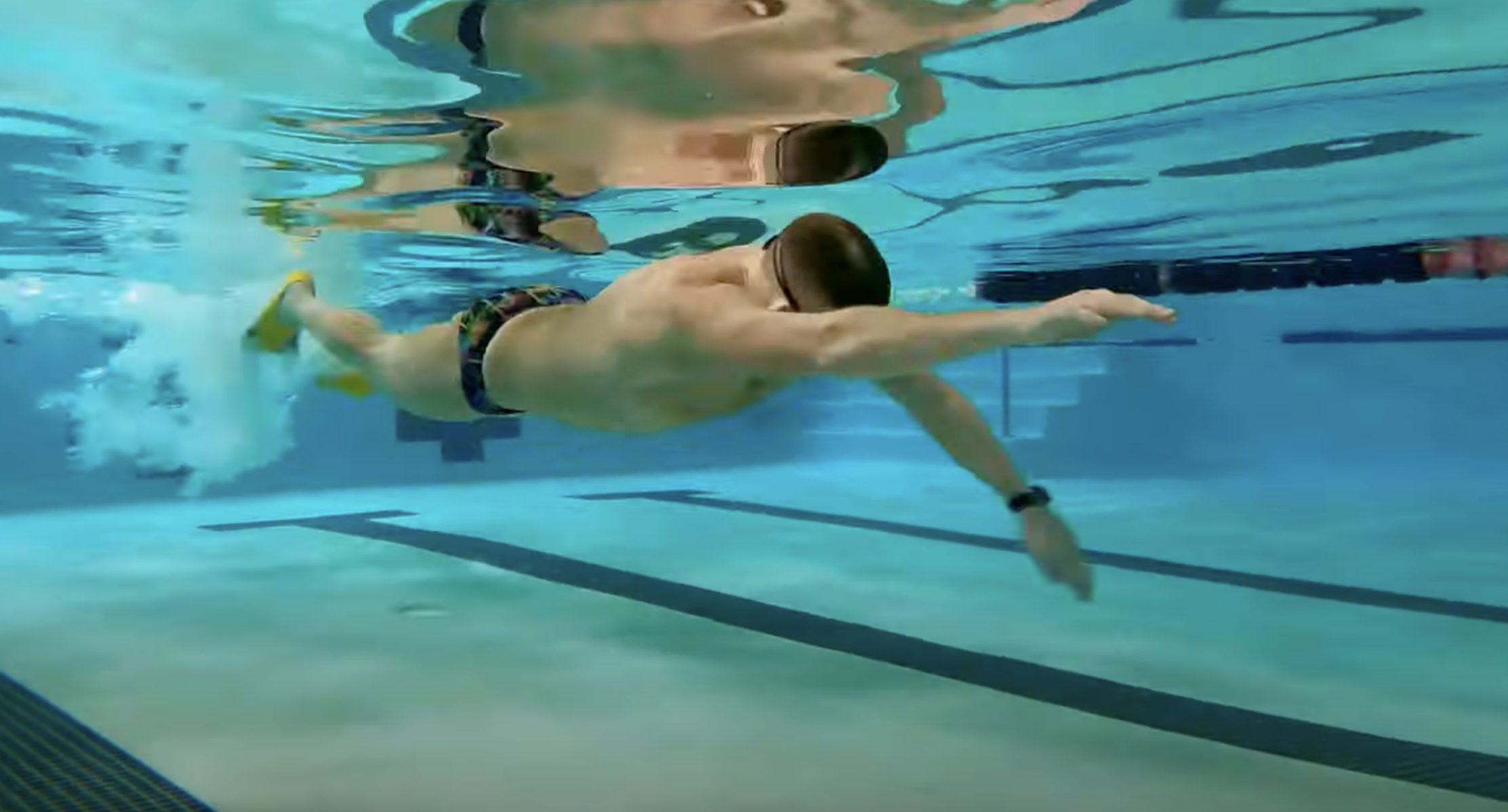What Is a Flutter Kick? Technique, Muscles Worked, and Benefits
/How often have you been told to “kick harder” during practice – only to find your legs burning out or your kick barely moving you forward? I’ve seen it countless times as a swim coach. The flutter kick looks simple from above the surface, but doing it right is anything but easy.
So, what is a flutter kick really? Why does it matter for both swimming speed and core strength? And how can you train it to become a true weapon in your races – not just wasted energy?
Let’s break it down.
If you want structured dryland workouts that directly improve your swimming performance, check our program on TrainHeroic.
I’ve designed it specifically for swimmers who want to build a stronger core, more efficient kick, and race-ready power.
What Is a Flutter Kick?
At its most basic, the flutter kick is the alternating up-and-down leg motion that powers freestyle and backstroke. But don’t be fooled by its simplicity. A good flutter kick isn’t about wild splashing or bending your knees like you’re pedaling a bike. It’s about rhythm, alignment, and efficiency.
In swimming, the flutter kick helps keep your hips high, stabilizes your stroke, and adds propulsion. Depending on distance and speed, a strong freestyle kick can account for 10–30% of your forward drive. That’s a lot of speed left on the table if you’re just going through the motions.
Outside the pool, you’ll also hear “flutter kick” used to describe a popular ab exercise – lying on your back, legs straight, alternating kicks above the ground. Different setting, same motion – and a great way to target your hip flexors, core, and lower abs.
Proper Flutter Kick Form (Video)
A strong flutter kick feels like a smooth ripple through the water – not a struggle. Picture your legs moving inside a narrow rectangular box: straight, controlled, and aligned. The motion begins at the hip, flows through a soft knee, and finishes with a pointed toe.
Watch: The Right Way to Flutter Kick:
Among the key points in doing a flutter kick correctly:
Kick from the hips, not the knees
Keep legs close together inside a narrow frame
Toes pointed, ankles flexible
Create steady white or boiling water at the surface
Avoid deep kicks – they push water down instead of back
When swimmers nail this form, the kick becomes a natural partner to the stroke. When it goes wrong, you’ll spot the warning signs: knees breaking the surface in backstroke or feet dropping too deep in freestyle. The goal is the right kick – narrow, powerful, and connected to the body line.
How to Do a Flutter Kick Step by Step
The flutter kick works best when you treat it as a chain reaction, similar to kicking a ball:
The motion begins at the hips.
Knees bend slightly – but never take over the kick.
Ankles stay loose, with toes pointed.
Each beat flows up and down like a whip, not a stomp.
When I coach swimmers, I build the skill in layers:
Kickboard drills – isolate the legs and feel the rhythm.
Streamline kick on the back – teaches body alignment and balance.
Add fins – build strength and get instant feedback on form.
Whole-stroke swimming – connect the kick to your freestyle or backstroke.
Mastering these steps turns the flutter kick from wasted effort into steady, efficient propulsion.
Streamline Flutter Kick with a Board
The streamline position isn’t just for starts and turns – it’s one of the best ways to train your kick.
Watch: Streamline Flutter Kick with Board
When you hold the board at its base, extend your arms, and press your head through, your body forms one long line from fingertips to toes. Add the flutter kick, and you’re training not just your legs, but also your body position in the water – a hidden benefit many swimmers overlook.
1 arm freestyle with board
Muscles Worked in the Flutter Kick
The flutter kick isn’t just about the legs – it’s a full chain of muscles working together:
Hip flexors & quads – drive the downbeat.
Glutes & hamstrings –lift the legs.
Calves & ankles – snap the kick and finish with pointed toes.
Core & lower back – stabilize the hips and improve streamline.
On land, the flutter kick ab workout puts more focus on your core and hip flexors, which is why it’s a popular conditioning drill. In the water, that same core stability is what keeps you riding high instead of sinking.
Flutter Kick Benefits
Why dedicate extra time to improving your flutter kick? Because it pays off both in the pool and on land.
For Swimmers
More propulsion – especially noticeable in sprints.
Better body alignment, which means less drag.
Quicker tempo changes when you need to surge mid-race.
Greater stamina over long-distance events.
For Fitness & Dryland
Stronger, leaner abs that carry over to every stroke.
Improved hip mobility and ankle flexibility – two overlooked keys to efficient swimming.
A low-equipment, highly metabilic core-burning workout you can do anywhere.
In short: a well-trained flutter kick doesn’t just make you a faster swimmer – it makes you a more durable athlete.
Flutter Kick Variations and Alternatives
Just like any skill, variety builds adaptability. Don’t lock yourself into one version – rotate these into your training:
Vertical kicking – trains raw power in deep water.
Side flutter kick – reinforces alignment for freestyle.
Tempo kicks with fins – develop speed and turnover.
Dryland flutter kicks – a core finisher that builds fitness without water.
Looking for variety? Mix in breast stroke or dolphin kicks as alternatives. Each challenges your body differently while sharpening overall leg power.
Flutter Kick Workout
Here’s how I like to program flutter kick training for swimmers I coach:
In the Pool
8×25 streamline kick (no board) – focus on alignment.
6×50 kick with fins – build pure power.
Timed 100s of kick – test endurance and mental toughness.
On Land
3×30 sec flutter kicks (classic ab workout).
Pair with planks, farmer’s carries, and knee tucks for a simple but brutal circuit.
The goal isn’t just stronger legs – it’s retraining your body so your kick connects seamlessly with your stroke, instead of draining energy.
FAQ: Flutter Kick for Competitive Swimmers
What’s a flutter kick?
It’s the alternating leg motion that powers freestyle and backstroke. At the elite level, it’s not just about movement – it’s about timing, rhythm, and keeping your body line long and fast.
Is the flutter kick good for abs?
Absolutely. A strong kick demands core stability. On land, flutter kick ab exercises target your hip flexors and lower abs – muscles that transfer directly to faster, more connected swimming.
Which muscles does the flutter kick work?
Your entire posterior chain and core. The kick draws on hip flexors, quads, and calves for speed, while glutes, hamstrings, and lower back stabilize, your body, create lift, and reduce drag.
How do I know if I’m kicking correctly?
Look for controlled whitewater at the surface, with power starting at the hips and snapping through pointed toes. If your knees are breaking the surface or your feet are dropping too deep, you’re losing efficiency – a sign to reset your form. Time yourself for 25-100 yards for a baseline to measure progress.
Final Takeaway
The flutter kick may look simple, but when done correctly, it transforms your swimming. A strong kick lifts your hips, reduces drag, and adds a burst of propulsion exactly when you need it. Out of the pool, the same motion builds rock-solid abs and hip strength.
Excellence lives in the fundamentals – and few fundamentals are more overlooked than the flutter kick.
If you’re ready to combine technique with strength, check out my Monthly Dryland Training Subscription. You’ll get swim-specific workouts designed to build a fitter, faster, more resilient body – so your flutter kick works for you, not against you.
Author: Dan Daly, CSCS
Swim coach, strength specialist, and founder of Train Daly. Helping swimmers build technique, strength, and confidence in the water.


